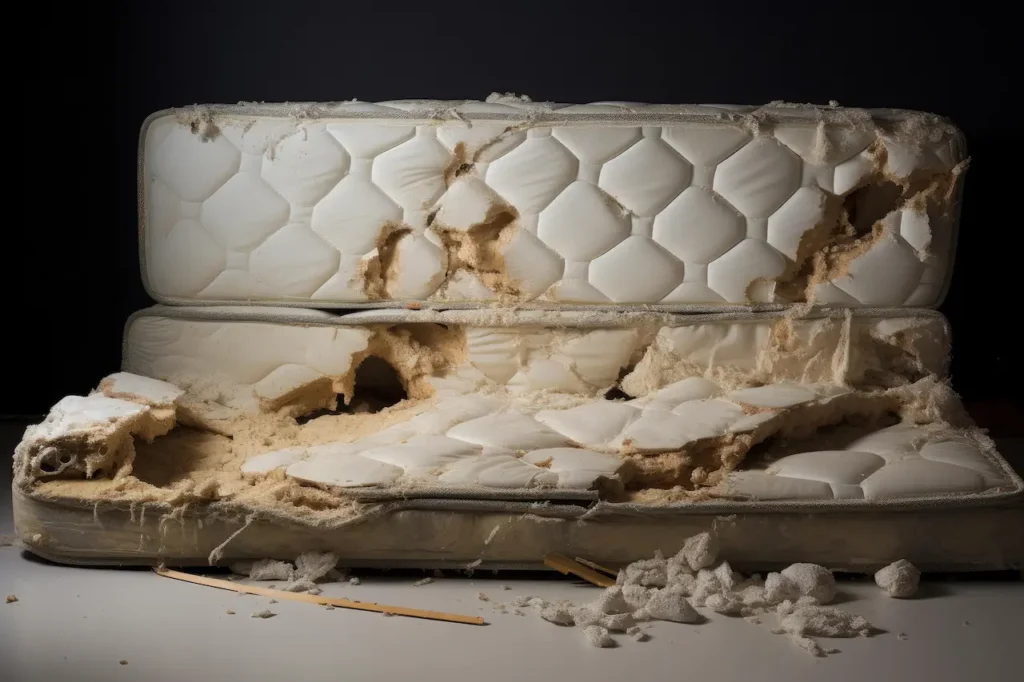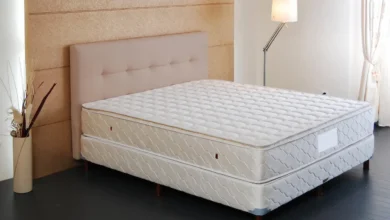Can You Recycle a Mattress?
Can You Recycle a Mattress? Addressing the Global Mattress Crisis
Ever wondered: Can you recycle a mattress? In an era where environmental awareness is growing, the question of whether you can recycle a mattress might seem straightforward, yet it’s an issue layered with complexity and urgency. The staggering amount of mattresses ending up in landfills each year has led to what many experts are calling a “mattress crisis.” In this guide, we’ll explore the current state of mattress recycling, why it’s so challenging, and the small but impactful steps consumers can take to help reduce this waste.
The Mattress Crisis: A Growing Environmental Concern
Every year, millions of mattresses are discarded around the globe. The United States alone throws away between 15 and 20 million mattresses annually, with many ending up in landfills. These bulky items take up an estimated 40 cubic feet of landfill space each, an enormous burden on waste facilities. The global figure is even more overwhelming, and with rising consumption driven by expanding sleep-product markets, the problem isn’t going away any time soon.
The root of this crisis lies in several factors:
- Bulky Design: Mattresses are large, dense items that don’t compact well, making them especially challenging to dispose of.
- Complex Materials: Most mattresses consist of multiple materials—steel springs, polyurethane foam, wood frames, and fabric covers. Each of these materials requires separate recycling processes.
- Rise of Online Mattress Marketplaces: With the rise of online retailers, more consumers are purchasing mattresses frequently, encouraged by convenience, wide choice, and free return policies. While this makes getting a new mattress easier, it also increases the volume of mattresses discarded, often with little to no guidance on responsible disposal.
In response, some governments, non-profits, and companies are taking initiatives to combat the growing environmental toll.

Want to learn about sleeping better? Read: Make Your Bedroom Darker For Better Sleep
Why Mattresses Are Difficult to Recycle
Recycling mattresses is far from straightforward. They are often an amalgamation of diverse materials that must be separated for proper recycling. A typical mattress includes:
- Steel Springs: These can be recycled as scrap metal and repurposed into new products.
- Wood Frames: Many wood frames are processed into wood chips or mulch.
- Polyurethane Foam: Often, foam can be recycled into carpet padding or other products.
- Fabric and Cotton Layers: These are sometimes repurposed for filters in industrial machinery, though not as frequently as other materials.
However, the time, equipment, and labor required to deconstruct each mattress make recycling a costly process. Facilities also must contend with certain materials that have low or no resale value, like some types of foam and fabric. For instance, the springs in mattresses are infamous for damaging machinery in recycling plants, leading to frequent repairs and downtime.
Consequently, only a small fraction of mattresses are recycled each year. In the UK, for example, only about 19% of mattresses make it through the recycling process, while the rest are sent to landfills or illegally dumped. In the U.S., efforts are underway to expand recycling facilities, but only 56 dedicated mattress recycling plants currently exist to meet the needs of the country’s annual waste.
The Impact of Mattress Waste on the Environment
The consequences of mattress waste extend beyond the immediate space they occupy in landfills. For one, these landfills emit methane—a potent greenhouse gas that contributes significantly to climate change. In addition, foam and other synthetic components can leach chemicals into soil and water, creating long-term environmental risks.
Another overlooked issue is illegal dumping. With few options for affordable mattress disposal, some consumers resort to abandoning them in empty lots, on curbs, or even in protected natural areas. In England, this kind of fly-tipping costs local councils over £58 million each year in clean-up efforts.
Legal Efforts and Recycling Programs in the U.S.
In recent years, a few states have implemented programs to help address the mattress waste problem. California, Connecticut, and Rhode Island have enacted laws that establish funding and recycling goals through the Mattress Recycling Council. For example, California’s program, signed into law in 2014, charges a one-time recycling fee at the point of sale for new mattresses. This fee funds mattress recycling centers and makes it easier for consumers to dispose of their old mattresses responsibly.
The California Mattress Recycling Program requires retailers to offer consumers the option to have their old mattress picked up upon delivery of a new one. This statewide program aims to reduce landfill use, cut down on illegal dumping, and create local jobs in recycling. By 2020, the state set an ambitious goal of diverting 75% of mattresses from landfills. However, even with these programs, the U.S. still faces challenges due to high recycling costs and logistical issues.

Want To Improve Your Bedtime Routine? Read: Building a Bedtime Routine for Adults
What Consumers Can Do to Recycle Their Mattresses
If you’re looking to recycle a mattress, you do have options. Though they may not always be simple, taking the extra steps to recycle your old mattress can make a real difference. Here are some of the best ways to get started:
- Ask Retailers for Removal Services: When purchasing a new mattress, ask if the retailer offers mattress removal and recycling. Many stores now provide this option, often at no additional cost.
- Check with Local Recycling Centers: Some recycling centers accept bulky items, including mattresses. Before you haul it over, call to confirm whether the facility accepts mattresses and if there are any fees associated.
- Donate to Secondhand Stores: If your mattress is gently used and meets hygiene standards, consider donating it to a secondhand store like Goodwill or The Salvation Army. Note that not all locations accept mattresses, so it’s best to call ahead.
- Hire a Mattress Recycling Hauler: Companies specializing in junk removal and recycling can be a reliable option, especially if you’re clearing out multiple items from a property. They often offer pick-up services and ensure mattresses are recycled or disposed of responsibly.
- DIY Recycling and Repurposing: If you have the time, you might consider repurposing mattress components. For instance, foam can be cut up and used as carpet padding or insulation, while springs can be sold as scrap metal.
Addressing the Crisis: What Needs to Change?
Beyond individual efforts, larger systemic changes are essential to curtail mattress waste. A few strategies could have a substantial impact:
- Increased Access to Recycling Centers: The limited number of mattress recycling centers is a bottleneck. More facilities are needed, especially in areas where consumers have few options.
- Improving Mattress Design: Companies should consider designing mattresses that are easier to recycle. Materials that are both durable and recyclable could become a new industry standard, reducing environmental impact from the outset.
- Product Leasing Models: Some manufacturers are exploring mattress leasing models, where consumers rent a mattress for a period and return it for refurbishment and reuse. Such circular models could be a sustainable alternative to current disposal practices.
- Enhanced Consumer Education: Many people don’t realize the impact of their mattress disposal or understand the recycling options available. Greater public education on the environmental impact of mattress waste could help consumers make more responsible choices.
The Future of Mattress Recycling
The mattress recycling crisis underscores the need for both individual responsibility and systemic change. As a consumer, understanding how to dispose of a mattress responsibly is a small but impactful way to help the environment. If your local laws and facilities make mattress recycling difficult, consider reaching out to local representatives to advocate for change or support nonprofits focused on sustainability.
In the meantime, as more consumers, retailers, and policymakers come together to address mattress waste, there is hope that recycling rates will improve, and the environmental impact of mattress disposal will be reduced. Making sustainable choices when it comes to mattress disposal is just one more way we can all work towards a cleaner, greener future—one mattress at a time.
